![]() While inbound marketing has been around in the US since 2006, it took eight more years for the trend to catch on in the UK.
While inbound marketing has been around in the US since 2006, it took eight more years for the trend to catch on in the UK.

By 2015, we, at Purple Frog based in Oxfordshire, took the leap and decided to expand our services into inbound marketing.
We decided that first we would test the waters with our own company. At the time, we were getting referrals from current clients, and the business was steadily growing, but it was slow.
We had neglected our own website and digital marketing, putting our clients’ work first.
In light of Purple Frog’s new inbound-oriented decision, and keeping in mind how pressed for time we were, we formed a plan.
We would:
- Start publishing regular blog posts.
- Promote our blog through social media, especially LinkedIn.
- Create two whitepapers we would use to convert leads, focused on one specific target persona.
Here's what has happened, what we learned during our journey, and how HubSpot has changed the game for us.
Inbound Without HubSpot
We had heard about HubSpot before, and often used its blogs and resources for our inbound strategy. We were perhaps a bit too cautious in making the investment right away and decided to try putting our plan into action without the use of HubSpot’s platform at first.
Lo and behold, it took a few months, but we started driving a bit more traffic to our website through the use of the blog and our two whitepapers.
Our old website was designed many years before using an inflexible template. That meant that our landing pages were poorly-optimised. Any leads that were collected through forms were hard to follow up because we didn’t have an integration with any kind of CRM.
Furthermore, we had no idea how many people visited the page compared to how many became leads. We didn’t know if any of our content promotion was particularly effective in generating leads. We could only find out where the visitors came from by spending hours on a mix of Google Analytics, Wordpress, Bitly, etc. and putting all the information together in a spreadsheet, but that took a very long time.
Results:
- We only received a very low amount of leads due to the poor optimization of the pages.
- We didn’t close any new customers as the few leads we had were not followed up with.
- We didn’t see any real return on the time invested in creating all the content.
Inbound With HubSpot
This experiment did not deter us from the idea of pursuing an inbound strategy, but it just highlighted the fact that we needed a better way to do it, so we signed up to HubSpot in January 2016. Once on the platform, this is what we did.
We redesigned our landing pages.
We immediately redid all the landing pages we had using the landing page tool.
- We created a new landing page.
- We selected a three-columns template that HubSpot had created for us to match our own website. We made sure that template didn’t have a navigation menu in order to focus people’s attention on completing the form and keep them on the page.
- We added the content to the website making sure to reply to the questions:
- What exactly is being offered?
- What are the benefits of the offer?
- Why does the viewer need the offer now?
- How does the user get the offer?
- We inserted a form that only asked for essential information. We also made use of smart fields and progressive profiling, which allowed us to replace previously answered smart fields and ask more questions as we gathered intelligence on our leads.
- We also set up notifications inside the forms, in the options tab, for our salespeople to be notified whenever someone submitted the form, so they could be followed up with a phone call.
- We redirected anyone who filled out the form to a thank you page that contains the link to download the content offer and a call-to-action to take the next step in the buyer’s journey.

We planned our follow-ups.
We implemented an automated follow-up system using workflows to nurture the leads that came through.
- We enrolled anyone who downloaded the guide (by making them all part of the same smart list and then setting the membership to that list in the enrollment criteria).
- We sent the first email right after someone downloaded the guide just to say thank you and giving them the link to the guide again.
- We set a delay of 5 days after which they received a blog post related to the guide they just downloaded.
- After a further delay of 3 days they would receive another email about our free consultation offer.
- After another 2 days they would receive the last email with a final reminder about the consultation and to ask for feedback on the guide.
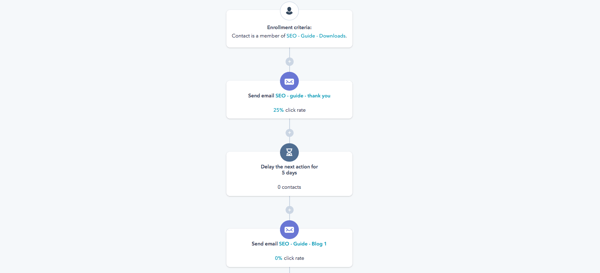
Further to the workflows, we set up a system that enabled our sales team to have more visibility on the leads that were coming in and who they need to follow-up by using custom sales views.
- Inside the contacts section of the Sales platform, we created different views for the different salespeople and the different lifecycle stages of the contacts.
- The filters were “HubSpot Owner” (who owns the lead) and “Lifecycle Stage” (what level of qualification does the lead have).
- We saved all the filters for easy access in the future.
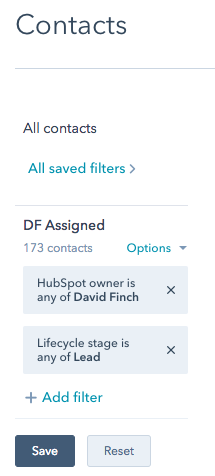
We analyzed and reviewed.
Once all parts were in place, we used the Sources tool to understand where our visitors and leads were coming from, and which of our blog promotion tactics were working best.
- We went into Reports > Sources Report.
- We selected the timeframe, like “This month to date”.
- We set the graph to be cumulative and ticked the box to “Show visits-to-contacts rate” in order to understand not only how many visitors we were getting, but also if they were converting into leads.
- We then analysed where the visits, leads and customers were coming from, and how good was the visitors-to-leads conversion rate for each source.
- We clicked on each individual source of traffic to dig deeper into the figures, and understand, for instance, what social media channel was giving us the best results.
- We kept tweaking our campaign based on this data in order to improve our results. For instance, by understanding which social media channel was generating more leads, we could start posting more on it. Similarly, if one was underperforming, we would A/B test the messaging, times, etc. and if it was still not working we would spend less time on it and focus more on other channels.
We also analysed the performance of each landing page, blog post and social media posts. For instance, to analyse the landing pages, we would go into Content > Landing Pages and then clicking on “Analyze”. We could see at a glance what landing pages were working best and make sure that the conversion rate was higher than 20%, which was our benchmark.
When it wasn’t quite hitting that conversion rate, we tweaked the appearance of the landing page, text and form to try and improve its performance.
Due to the simplicity of finding out all this information, we made a point of reviewing these figures on a daily basis.
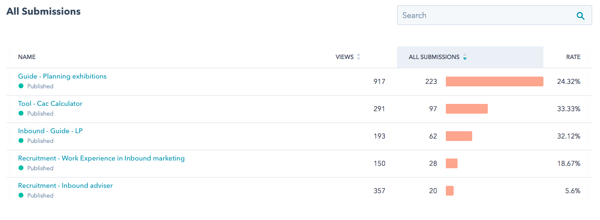
… and we repeated.
Using exactly the same process above, we quickly started to create a number of landing pages, targeting different personas and different stages of the buyer’s journey.
The Results
The effects of this strategy was almost immediate. We went from an average one to two low-quality leads per month to 10 leads the first month, up to a peak of 52 leads in May 2017.
All of these leads now get systematically followed up with phone calls and workflows, and we have already closed two into clients and have a number of strong opportunities in the pipeline.
Because we had the same system without and with HubSpot, we could really see the value of it and the improvement it made to the success of the strategy.
We're now a HubSpot partner agency, replicating the success we had and using the teachings we took from our own experience to grow our clients’ businesses, both from the point of view of marketing and of sales enablement through the HubSpot Growth Stack.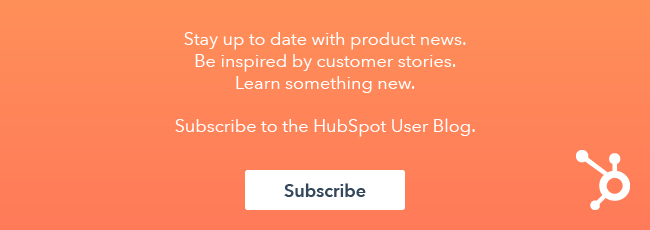



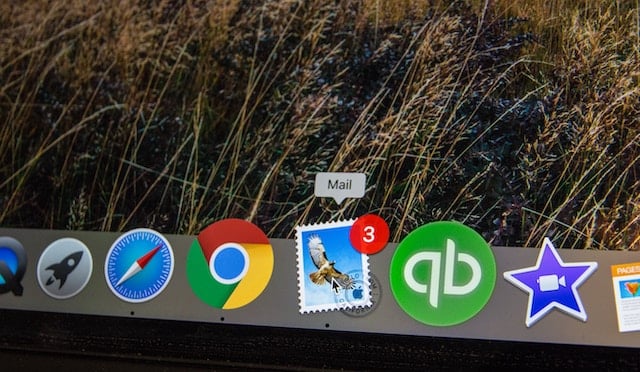

![Plannuh Builds Product With the Customer at the Forefront [Customer Story]](https://53.fs1.hubspotusercontent-na1.net/hubfs/53/IMG_0128-3.jpg)
![How One HubSpot Customer Uses Pop-Up Forms and Workflows to More Intelligently Help Customers [Customer Story]](https://53.fs1.hubspotusercontent-na1.net/hubfs/53/inbound-lorax-ff7a59-light.jpg)


![How TurboTenant Makes Property Management Easy With HubSpot [Customer Story]](https://53.fs1.hubspotusercontent-na1.net/hubfs/53/unique-balcony-architecture.jpg)